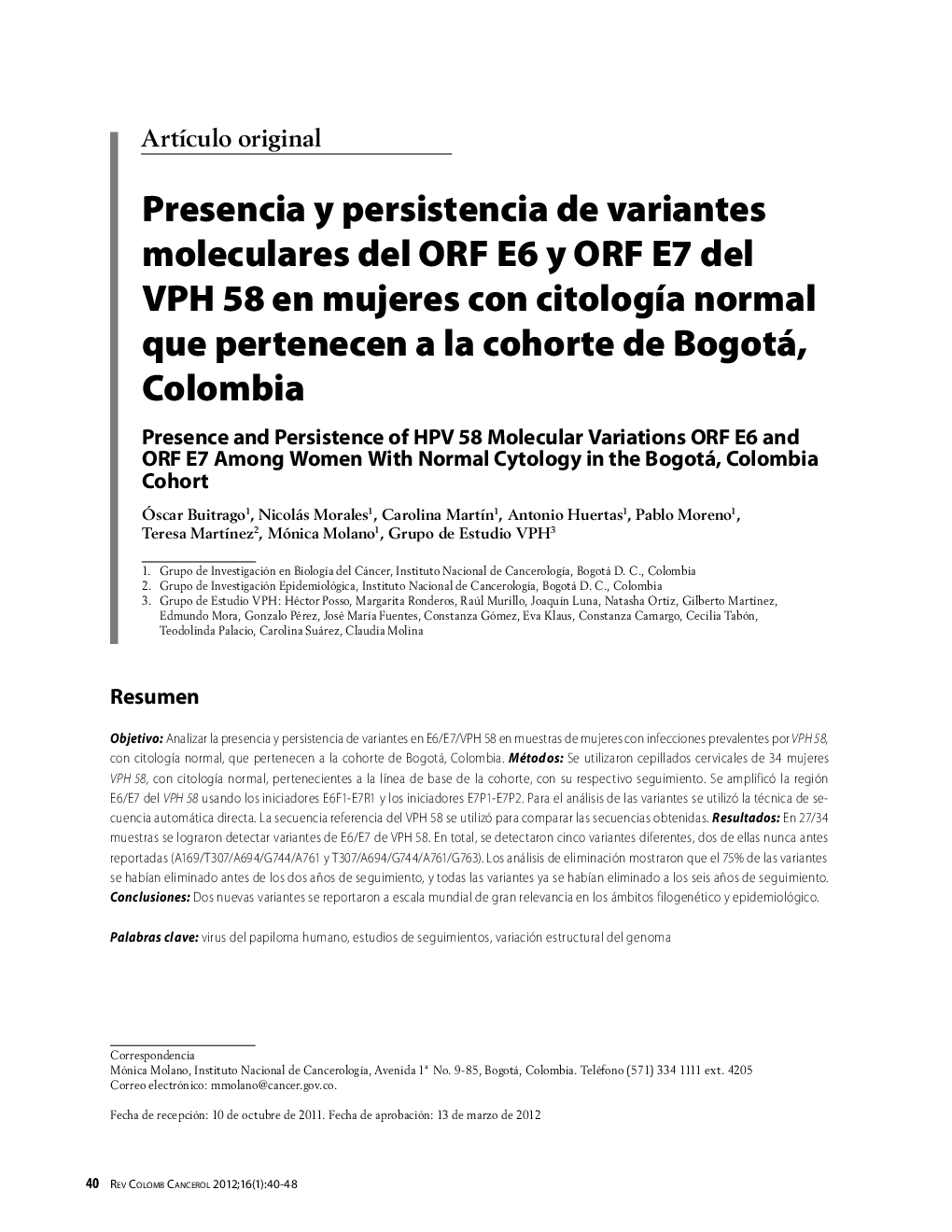| Article ID | Journal | Published Year | Pages | File Type |
|---|---|---|---|---|
| 3997327 | Revista Colombiana de Cancerología | 2012 | 9 Pages |
ResumenObjetivoAnalizar la presencia y persistencia de variantes en E6/E7/VPH 58 en muestras de mujeres con infecciones prevalentes por VPH 58, con citologÃa normal, que pertenecen a la cohorte de Bogotá, Colombia.MétodosSe utilizaron cepillados cervicales de 34 mujeres VPH 58, con citologÃa normal, pertenecientes a la lÃnea de base de la cohorte, con su respectivo seguimiento. Se amplificó la región E6/E7 del VPH 58 usando los iniciadores E6F1-E7R1 y los iniciadores E7P1-E7P2. Para el análisis de las variantes se utilizó la técnica de secuencia automática directa. La secuencia referencia del VPH 58 se utilizó para comparar las secuencias obtenidas.ResultadosEn 27/34 muestras se lograron detectar variantes de E6/E7 de VPH 58. En total, se detectaron cinco variantes diferentes, dos de ellas nunca antes reportadas (A169/T307/A694/G744/A761 y T307/A694/G744/A761/G763). Los análisis de eliminación mostraron que el 75% de las variantes se habÃan eliminado antes de los dos años de seguimiento, y todas las variantes ya se habÃan eliminado a los seis años de seguimiento.ConclusionesDos nuevas variantes se reportaron a escala mundial de gran relevancia en los ámbitos filogenético y epidemiológico.
ObjectiveTo analyze the presence and persistence of E6/E7 HPV58 variations in women with prevalent HPV 58 infection, with normal cytology, who belong to the Bogotá, Colombia cohort.MethodsCervical cytobrush was used on 34 HPV58 women, with normal cytology, who are part of the cohort base line; respective follow was performed. The HPV58 E67/E7 region was broadened by using E6F1-E7R1 and E7P1-E7P2 indicators. Variation analysis was carried out with automatic direct sequencing. HPV58 sequence reference was used to compare the sequences that had been obtained.ResultsIn 27/34 samples, E6/E7 variations of HPV58 were successfully detected. A total of five different variations were detected, two of which had never been reported before (A169/T307/A694/G744/A761 and T307/A694/G744/A761/G763). Elimination analysis revealed that 75% of variations had been eliminated within two years of follow up, and that all variation had been eliminated at the end of six years of follow up.ConclusionsTwo new variations of universal phylogenetic and epidemiologic noteworthiness were reported
